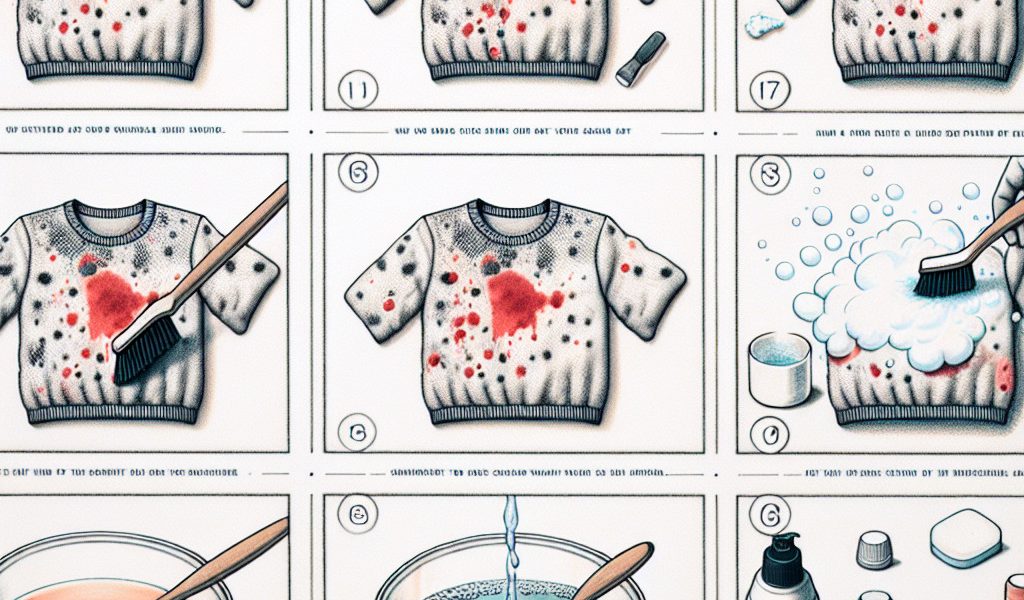Unmasking Stain-Free Solutions: A Comprehensive Guide to Paint Stain Removal from Clothing
Introduction
Whether you are a fan of creative hobbies, decoration or DIY, it sometimes happens that paint stains become encrusted on your clothes. Do not panic ! We offer you a complete guide to removing these stubborn stains, whether they are water-based or oil-based paints and whatever the type of textile concerned.
Fresh and dry stains: how to act quickly?
To maximize your chances of removing the stain without damaging the garment, it is essential to intervene quickly. Here are the first steps to follow:
- Fresh stain: immediately blot excess with a clean, dry cloth or paper towel.
- Dry spot: Gently scrape the surface with a plastic spatula or the rounded edge of a spoon to remove most of the residue.
Methods for processing water-based paints
For stains caused by acrylic, glycerophthalic, or other water-soluble types, follow these steps depending on the material type:
Cotton, linen and synthetics
- Soak the stained area in warm, soapy water for 15 minutes.
- Scrub gently with a toothbrush to loosen the paint.
- Rinse thoroughly with clean water and check if the stain is gone. If necessary, repeat the previous steps.
- Machine wash the garment according to the care instructions on the label.
Fragile fabrics (silk, satin) and denim
For these more delicate or textured materials, it is preferable to use a specific stain remover:
- Apply a stain remover suitable for the type of textile (follow the manufacturer’s recommendations).
- Leave it on for a few minutes without rubbing or rinsing.
- Wash the garment by hand or machine according to the care instructions on the label.
Methods for processing oil paints
Oil-based paints are more difficult to remove than water-soluble ones. Here’s how to do it:
Cotton, linen and synthetics
- Warning : before starting, make sure that your clothing supports white spirit by carrying out a preliminary test on an inconspicuous part.
- Soak a cotton swab in white spirit and gently dab the stain until it dissolves.
- Wipe with a clean cloth to remove paint and solvent residue.
- Machine wash the garment according to the care instructions on the label.
Fragile fabrics (silk, satin) and denim
For these more delicate or textured materials, it is preferable to use a specific stain remover:
- Apply a stain remover suitable for the type of textile (follow the manufacturer’s recommendations).
- Leave it on for a few minutes without rubbing or rinsing.
- Wash the garment by hand or machine according to the care instructions on the label.
Stains on particular materials: silk and suede
Some fabrics require special attention. Here are our tips for cleaning silk and suede:
Silk
- Warning : before starting, make sure that your clothing is resistant to ammonia by carrying out a preliminary test on an inconspicuous part.
- Mix 1 part ammonia in 10 parts cold water.
- Dip a cotton swab in this solution and gently dab the stain.
- Rinse immediately with cold water and dry with a clean cloth.
Suede
Since suede is a very delicate material, it is best to entrust cleaning to a leather professional. However, if you want to try to remove the stain yourself:
- Warning : before starting, make sure that your garment supports essence C by carrying out a preliminary test on an inconspicuous part.
- Soak a cotton swab in Essence C and gently dab the stain until it dissolves.
- Wipe with a clean cloth to remove paint and gasoline residue.
- Lightly brush the suede to straighten the fibers.
Conclusion
Now that you know all the tips for removing a paint stain from clothing, don’t hesitate to indulge in your creative activities without fear of accidents! And remember: acting quickly and choosing the right method for the type of textile are essential to keeping your clothes intact. Happy crafting!
